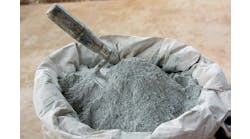“Compliance is further improved by two-factor authentication with user ID and password plus biometrics, which are required to log on and again for each parameter change.” Piyush Rao of Fresenius Kabi Oncology Ltd. on change management features of the company’s new PlantPAx automation system.
Part of the global Fresenius group, Fresenius Kabi Oncology Ltd. (FKOL) in Haryana, India, develops, manufactures and markets anti-cancer products for critically and chronically ill patients. The group was founded in 1462 as a local apothecary in Frankfurt, Germany. In 1979, it started manufacturing dialysis equipment, and opened in India in 2008. Today, its global annual sales are €33.9 billion with 273,249 employees.
“Every 0.7 seconds, a patient starts dialysis treatment with our equipment,” said Piyush Rao, deputy general manager, process engineering, FKOL, at the Rockwell Automation Process Solutions User Group this week in Philadelphia.
FKOL’s manufacturing capability heavily depends on a process that produces pharmaceutical-grade solvents. Its solvent production area includes four automated batch units, and totals 1,200 I/O. However, the solvent process was prone to manual intervention, lost production, safety hazards and poor visibility, which affected the entire plant.
“If we’re not able to manufacture solvent, we can't run the plant,” Rao said.
The facility implemented a PlantPAx DCS to reduce manual intervention and provide a scalable platform for future expansion and automation. Once in place, they found that not only did it help them meet initial goals, it also helped them improve reliability, safety and quality, and delivered the benefits of centralized control of automated equipment.
“The project started 2017, and was completed this year,” Rao said.
Controlling human interactions
“Productivity depends on reliability, which means repeatability and reproducibility. Those suffer when operators intervene in the process,” Rao explained. Manual operations also raise the probability of accidents and spills. “The solvents have low flashpoints and high volatility, which made this important. Our critical KPIs are for process safety, and to minimize human interactions.”
FKOL’s goals for the project were to raise compliance, which reduces manual errors and improves safety; raise productivity by eliminating waste and optimizing resource allocation; and improve monitoring and control with plant dashboards, analytics support and calibration management.
The company also expected the project to provide tools for innovation and continuous improvements—to identify and improve value-add, and allow strategic focus on critical business opportunities, new product introductions and critical manufacturing processes.
In detail, the project was designed to:
-
Give operations the means for reliable and safe operation of equipment, easy compliance, and error-free reports,
-
Improve safety with suitable interlocks to avoid accidents and solvent exposure, and
-
Ease regulatory compliance with a qualified and validated system, double authentication, 21CFR Part 11 compliance and calibration management
The chosen technology includes the PlantPAx DCS, FactoryTalk View SE, FactoryTalk Batch, FactoryTalk Historian, FactoryTalk AssetCentre, a virtual environment, plantwide Ethernet and Endress+Hauser instrumentation. “Certain instruments are critical, so Endress+Hauser was necessary for us,” Rao said.
Productivity and more
The anticipated productivity gains were achieved by optimizing equipment capacity, increasing reliability, enhancing solvent recovery, and reducing manpower. These are powered by process monitoring and analysis, using automated data collection, trending and reporting.
Equipment can be operated from the floor as well as the plant control room. For emergencies, it can also be monitored and controlled from a central site control room in the administration block. View-only web access is available for five authorized users at a time. “It can be viewed from anywhere in the world,” Rao said, and authorized users can generate customized reports.
Centralized operation has increased safety compliance by reducing solvent exposure. Interlocks of the distillation equipment with utility parameters also now stop distillation in event of utility failure, further reducing the probability of spills and losses.
“There’s no manual operations or recording, and all batch reports are automatically generated at level 2, not in the MES,” Rao said. Datalogging of all operating parameters for automated equipment improved current good manufacturing practices (cGMP) compliance by eliminating manual data entry errors.
“Compliance is further improved by two-factor authentication with user ID and password, plus biometrics. These are required to log on, and again for each parameter change,” Rao said. “The complete system is 21CFR Part 11-compliant.”
Equipment operations are optimized and manual delays are avoided, leading to higher equipment utilization. Effective process control on validated strategies has reduced operator-to-operator variations, and established consistent performance. “Elevating equipment capacity is not possible in manual mode, but automation achieves it,” Rao added.
“Centralized operation reduces manpower requirements on the floor, as multiple floor operations are performed by the centralized operating systems,” Rao said. “This allows manpower to be more effectively used for other operations.”
Enabling optimization
Producing solvent is a complex operation that traditionally depends on manual observation. “All the units are difficult due to the nature of the process, where parameters vary throughout the process,” Rao said.
For example, on temperature-sensitive product streams in reduced-pressure systems, “Temperatures and viscosities are both important,” Rao said. “We decide based on the situation which parameter takes command of control. The system identifies and selects the strategy for a specific situation. Once the correct parameter is selected, it’s straightforward to choose the control strategy.”
Relieving bottlenecks means, “Realizing the highest capacity with minimum downtime,” Rao said. This is being done through close monitoring and “mistake-proofing,” he added, enabled by centralized operation and monitoring, and seamless migration of graphics and trending for better user acceptance.
Finally, “Measuring OEE made it easy for production managers to understand the effectiveness of their organization,” Rao said. For example, “It allowed us to understand, online for the entire line, the maintenance time. We can now predict for a month, or a year, what our capacity will be.”
The editors of Control are on-site at Automation Fair 2018 to bring you breaking news, innovations and insights from the event. Once the event is over, they will put together a report featuring the top news. Pre-order your copy today.
[javascriptSnippet]





